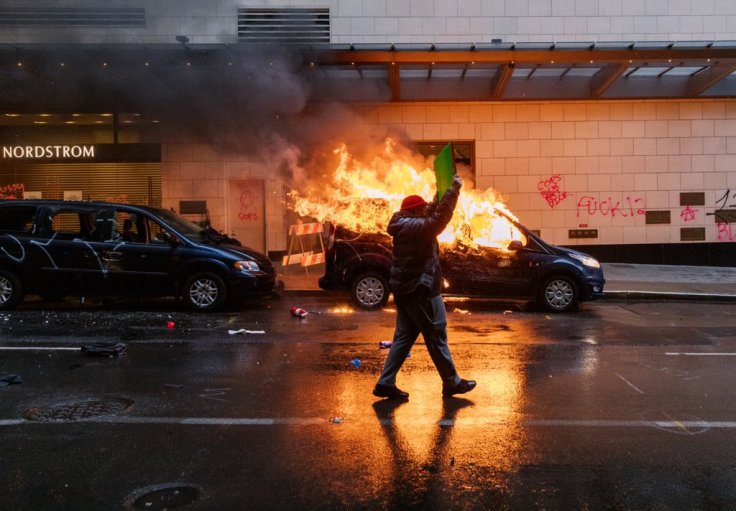After sending the National Guards to control the situation across U.S. states following violent protests against George Floyd's death, President Donald Trump has now threatened to revoke the Insurrection Act of 1807, if the situation doesn't come under control.
The killing of an African-American named George Floyd by a policeman in Minnesota has resulted in uproar as people have taken to the street in thousands despite restrictions following coronavirus pandemic. Protests have turned violent and Trump has been making statements of war that have irked the people more.
Recently, after telling that he was considering branding of ANTIFA as a terrorist organization, now during a speech at Rose Garden he made another statement that he was considering invoking the Insurrection Act. This Act involves deploying active military members to deal with protesters on American streets, with or without the consent of respective states.
"If a city or state refuses to take the actions necessary to defend the life and property of their residents, then I will deploy the United States military and quickly solve the problem for them," he told at the Rose Garden on June 1 hinting at invoking of Insurrection Act.
Can Trump Invoke Insurrection Act Without States' Consent?

The insurrection Act of 1807 gives the president the power to send the military to any street of the U.S. during violent protests. The president can federalize the National Guard and use Armed Forces to suppress an insurrection against the government of that state. Usually, the Act is invoked at the behest of the state. But if it becomes impossible to enforce federal laws through ordinary proceedings and states fail in safeguarding its citizens' civil rights, the president can use federal armed forces in a state without the consent of a state government.
Though the Act was initially framed in 1807, the current rules were added in 1871 with the revision to the Third Enforcement Act. The revision was made to protect African Americans from attacks by the Ku Klux Klan. The current framework in the Act enables forces to even act against the will of the state government to maintain peace, in certain situations.
History of Insurrection Act in the U.S.
The Act was first invoked without the consent of states during desegregation fights between 1957 and 1965. It was also brought in force following looting in the aftermath of Hurricane Hugo in 1989. The most recent one was in the 1992 Los Angeles riots also known as Rodney King Riots.
Though the Act states that forces can be used against particular state's consent, it is not easy as Trump makes it sound. In 1981, the Office of Legal Counsel clarified that the act can be used only when the state has exhausted using its complete resource and failed to maintain law and order.
What happened in 2006 is an example of why it is not easy to invoke the act throughout the states in the country. The George Bush administration in 2006 had considered invoking the Insurrection Act as he thought Louisiana had failed in handling the post-Hurricane Katrina situation in the state. But as the governor refused to comply, an amendment was made to the Insurrection Act by the John Warner National Defense Authorization Act for 2007.
This was to allow the use of the military regardless of the state's consent if there was anything hindering the enforcement of laws. The law was even enacted. But soon the 50 states got together and governors issued a joint statement against the amendment resulting in repealing of the law in 2008. Thus currently, the language prevalent in 1871 continues to be effective without the recent changes.








